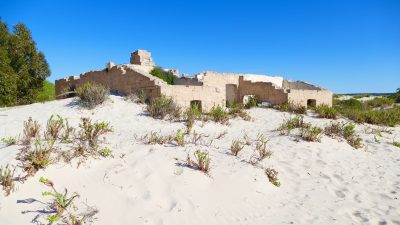 The old Eucla Telegraph Station, situated near the border of Western Australia and South Australia, stands as a testament to Australia’s early communication infrastructure. Established in 1877, this remote outpost played a crucial role in connecting the eastern and western parts of the continent via the Overland Telegraph Line.
The old Eucla Telegraph Station, situated near the border of Western Australia and South Australia, stands as a testament to Australia’s early communication infrastructure. Established in 1877, this remote outpost played a crucial role in connecting the eastern and western parts of the continent via the Overland Telegraph Line.
Eucla’s strategic location made it an ideal midpoint for relaying messages between Perth and Adelaide. The station was a hub of activity, staffed by dedicated telegraphists who worked tirelessly to maintain communication across vast distances. The original limestone building, constructed with materials sourced from the nearby Nullarbor Plain, served as both a workplace and living quarters for the station’s employees.
The telegraph station’s importance extended beyond its communication function. It became a lifeline for travellers crossing the Nullarbor, offering refuge and assistance in the harsh desert environment. The small community that grew around the station included not only telegraph workers but also their families, creating a unique outpost of civilisation in an otherwise desolate landscape.
However, the advent of newer technologies gradually reduced the need for telegraph stations. Eucla’s decline began in the early 20th century, accelerated by the encroachment of sand dunes that slowly buried parts of the old township. Today, the ruins of the Eucla Telegraph Station stand as a poignant reminder of Australia’s pioneering spirit and the technological advances that shaped the nation’s development.
It is also a must visit item on any traveller’s itinerary when crossing the Nullarbor in either direction.







Leave A Comment